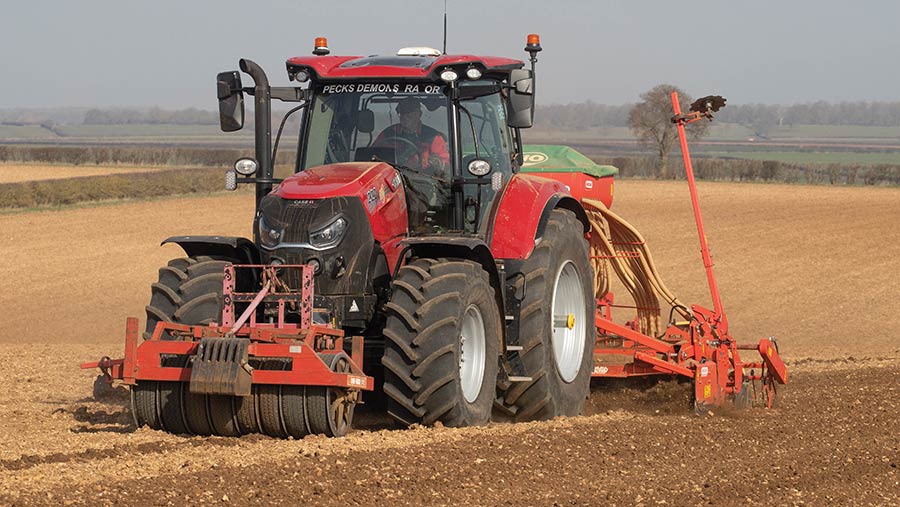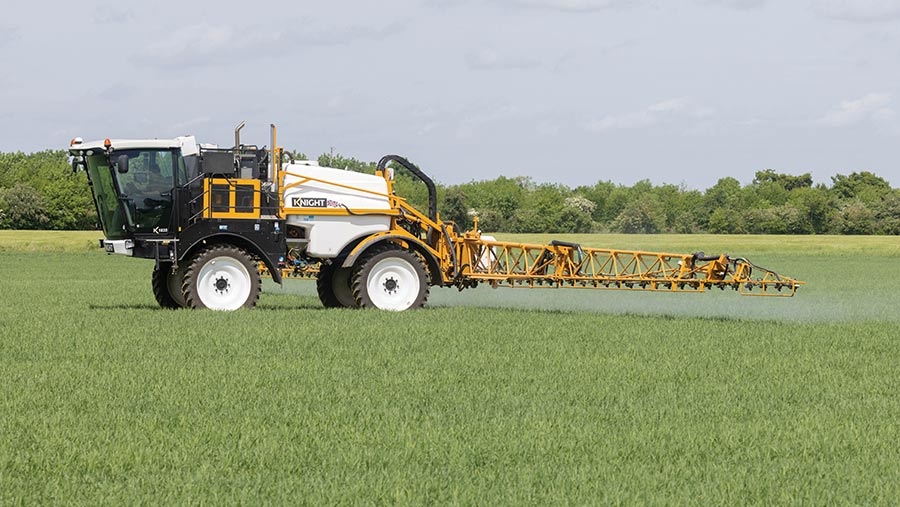How to get spring barley off to a good start
 © Tim Scrivener
© Tim Scrivener Whether it’s an option to replace missed or failed winter drillings, or a profitable mainstay in the rotations of committed malting growers, spring barley is expected to increase its area this season.
After such a prolonged wet spell, land originally destined for winter cropping is being switched into spring options – with the good returns and marketable commodity on offer from spring barley making it an obvious choice and key crop option.
See also: How to prevent spring barley lodging
Malting premiums remain high and will be the difference where crops make the grade and are accepted for that market, so contracts are key, agree market commentators.
The crop’s wide drilling window helps, as it must go into a good seed-bed, advise agronomists. That means 5-10 days of patience will pay off – with both yield and quality unlikely to be adversely affected if it is drilled in the next couple of weeks.
Drilling date
In Scotland, spring barley can go in any time from the beginning of March until the end of April, reports Alistair Gordon, agronomist and regional technical manager with ProCam.
“It’s a lengthy window, but the obvious watch point is with the latest dates and any knock-on effect on the next crop and the rotation,” he says.
“It can be up in 4-5 days if the temperature, seed-bed and nutrition are right. Conversely, it can take two weeks to emerge if these things aren’t aligned.”
In England, in the crop’s traditional southern heartlands, drilling typically starts in mid-March, highlights his colleague, agronomist and southern region technical manager Justin Smith.
“At that time, a seed rate of around 160kg/ha is used. We add 5kg/ha for every 10 days of delay.”
His advice is to use a spade to check for any compaction before drilling and to be aware that barley is sensitive to pH, with a minimum of 6.5 being the ideal starting point.
“Then consider DAP (di-ammonium phosphate) or similar in the seed-bed – having the nutrients present will help. Both macro- and micro-nutrition will need attention.”
With some nitrogen in the seed-bed, the remainder should go on some 2-3 weeks later when the tramlines are visible. “The end market implications are really important so nitrogen must be monitored.”
The role of biostimulants
With ground conditions less than ideal in many areas, biostimulants may be able to help crops in two ways this year, believes Alistair.
“Our focus has been on whether they can enhance nutrient uptake and if they have a role in reducing stress, so helping with ramularia.”
He has seen good results with the foliar-applied phosphite product, Incite, applied around GS21 to stimulate root growth. He also used Zodiac, which is seaweed-based and contains amino acids to build root mass and increase tiller numbers.
“Where they’re used, this type of product has to go on early. They can help with root and tiller development. Post-chlorothalonil, we are looking at all the ways we can reduce the impact of ramularia infections and we know stress is a contributing factor.”
Growth regulation
The use of plant growth regulators should be tailored to individual situations and varieties, he adds.
“In Scotland, we don’t use a PGR as standard on spring barley, but we do where Sassy is being grown, for example.”
Justin agrees. “Certain varieties need growth regulation, while crops being grown on fertile or exposed sites will benefit too. Any later-sown crops, which race through the growth stages, can end up with thin weak stems.”
Where rooting needs help or stems need strengthening, PGR use should be considered, he adds.
“One application will suffice in most crops but the timing is key – be aware that if chlormequat is used as the early treatment ‘bounce back’ may occur, with the top part of the plant weakened.”
His preference is for trinexapac-ethyl (as in Moddus) at GS30, to provide anchorage and rigidity, with a later follow up planned for high-risk situations.

© Tim Scrivener
Weed control
Spring barley is a helpful reset where grassweeds are concerned, with cultivations adding to the control options. It is also one of the few spring cereals that still has a range of pre- and post-emergence herbicides available.
However, the need for it to grow away quickly means that pre-emergence herbicide applications can be an issue.
“We don’t really want any hold-ups – the crop needs to accelerate out of the ground. Putting seed rates up slightly might be a better approach.”
While Luxinum (cinmethylin) is now approved for spring barley, that only applies to crops being grown for feed. “For this reason, and with its cost in mind, it’s not a product of choice for spring barley.”
Disease control
Fungicide programmes will vary according to variety, drilling date, weather conditions and the presence of surface trash, notes Alistair.
“We’re seeing huge differences where residue has created a green bridge and allowed the transfer of inoculum.”
Multisites, in the form of either folpet or sulphur, are important for ramularia control and should be part of the tank mix, he adds.
“Well-timed T1 and T2 sprays will cover most disease threats. At this stage of the year, we don’t know what conditions are going to bring. Crop walking will be the key.”
Their final point is aimed at growers who are growing spring barley for the first time or as a replacement crop, rather than it being a regular in their rotation.
“It is a take-all host and it can give you a volunteer problem in the following crop. So use a stale seed-bed prior to drilling the following crop and weigh up using Latitude (silthiofam) seed treatment on subsequent winter cereals.”
Spring barley markets
There are three main markets for spring barley. In Scotland, malting is the main outlet with a small brewing segment, and in England, brewing and feed are the main outlets.
Feed
- Higher N grain desirable
- Opportunity to go for yield
Malting
- 1.4-1.6 grain N
- Quality required – beware skinning and screenings
Brewing
- 1.65% + grain N
- Variety specific
- Quality important
Spring barley reminders
- Option for missed autumn drillings
- Identify target market and understand requirements
- Short season crop – requires good rooting and stress management
- Revisit seed rates where seed quality or conditions dictate
- Concentrate on seed-bed and available nutrients
- Monitor crops throughout growing season.

